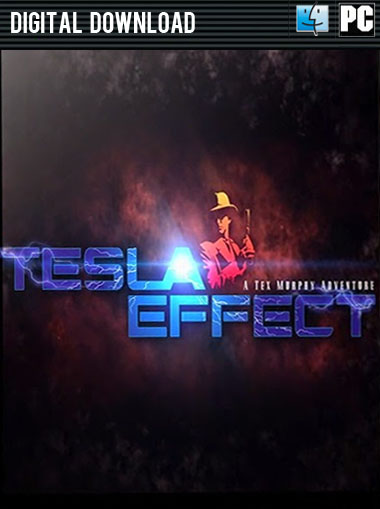Exit out of Full Screen Mode in Mac OS X with a Keystroke For users who like keyboard shortcuts, there’s an easy solution to exiting (and entering) full screen mode that uses a fairly easy to remember keystroke: Command+Control+F will exit or enter Full Screen Mode. I think this is Symfony's fault, but do you know maybe of an option to change the escape sequence for colors from e to 033 for mac os? See attached image to get a sense of what I mean. Rstruber changed the title ANSI Escape Sequence in Mac OS ANSI Escape Sequence for bash colors in Mac OS May 17, 2014. Press the Escape key, located in the upper-left corner of the keyboard. If you have trouble using your computer’s standard QWERTY keyboard, you can switch the keyboard to Dvorak layout, which optimizes key layout for typing comfort and ease of use.
If you like this series and want to learn Terminal and the shell on macOS in more detail, get my book “macOS Terminal and Shell“
There are a group of characters that have special meaning in bash.
Also whitespace characters also need to be treated with care:
The space character is a legal and often used character in file names on macOS. However, in bash and other shell commands , a space character (and other whitespace characters) separates a command from an argument and the arguments from each other.
When you try to enter a filename with a space, you will get an error:
To convince the shell that ‘/Library/Application Support’ belongs together, you can either ‘escape’ the space character or ‘quote’ the path.
Experienced users who have worked in a UNIX environment for a long time tend to avoid these special characters in filenames. However, as a system administrator, your users will probably not heed any rules you may want to impose. You will have to deal with many possible combinations.
Escaping Characters
The escape character in bash is the backslash . A character that follows a backslash will be treated with no special meaning:

In Finder, you can name files and folders nearly any way you want. When you encounter special characters from the list above you have to escape them with backslash. For a directory named ‘Project (Old & New)’ you would type:
All of this further confused by the fact that the shell will happily display the path with the unescaped special characters:
Separation Characters
In bash (and in Unix in general) files and directory names cannot contain a forward slash / since the character is used in paths to separate directories. However, Finder lets you name a file or folder with a forward slash, e.g. ‘Yes/No’.
On the other hand, Finder does not let you name a file or folder with a colon :. The underlying HFS+ file system uses the colon as a separator.
This conflict is solved by translating a / in the Finder (and underlying file system) to a colon : in the shell and vice versa.
A folder named ‘Yes/No/Maybe’ in Finder will appear as Yes:No:Maybe in the shell and you have to escape the colons when using the path in a command:
Note: some characters that are legal on macOS might not be on file servers, which are usually hosted by other operating systems.
Quoting
As seen above, escaping characters can make the path quite unreadable. You can also place the name or path in quotes:
In bash you can use single quotes ' or double quotes ' to quote paths.
Single quotes are more effective. Any character in single quotes is used as is, with no special function. Even the backslash character has no special function. The only character you cannot use in single quotes is the single quote itself.
Double quotes ' are ‘weaker’ quoting. Double quotes remove the special function from all special characters except $, , <code></code>, and <code>!</code>. Within double quotes you can use the backslash to escape <code>$</code>, <code>'</code>,, and (but not the !).
Escape Strategies
In general, single quotes are most useful and easiest to use. However, you cannot use single quotes when the filename contains a single quote.

Double quotes still require some characters to be escaped with the backslash and cannot deal with an exclamation mark !.
Backslash escaping works in nearly all cases, but can be tricky to type right and is quite illegible.
| name (in Finder) | Backslash Escape | single Quotes | Double Quotes |
|---|---|---|---|
| My Great Folder | My Great Folder | 'My Great Folder' | 'My Great Folder' |
| “New” Files | 'New' Files | 'New' Folder' | 'New' Folder' |
| ‘Old’ Stuff | 'Old' Stuff | cannot escape ' | 'Old' Stuff' |
| Important! | Important! | 'Important!' | cannot escape ! |
| Bump m/ | Bump m: | 'Bump m:' | 'Bump m:' |
| Do@Home | Do@Home | 'Do@Home' | 'Do@Home' |
| Yes/No/Maybe | Yes:No:Maybe | 'Yes:No:Maybe' | 'Yes:No:Maybe' |
| Project (Old & New) | Project (Old & New) | 'Project (Old & New)' | 'Project (Old & New)' |
Profit$$$ | Profit$$$ | 'Profit$$$' | 'Profit$$$' |
Quoting and Tab Completion
When typing paths, always use tab completion to be safe. Tab completion uses backslash escaping by default.
However, when you start a quoted path, tab completion will complete in quoted form.
Tab completion is even smart enough to change the approach when the strategy you chose (i.e. double quotes) cannot work:
Quoting and Home Path
Since you generally use quoting to avoid bash changing characters, you cannot use the ~ to get a short cut to your home directory in quotes.
However, you can leave the ~ outside of the quotes and get the best of both worlds:
Murphy's Escape Mac Os X
When you use double quotes, you can also use the $HOME environment variable:
Murphy's Escape Mac Os 11
Next: Commands